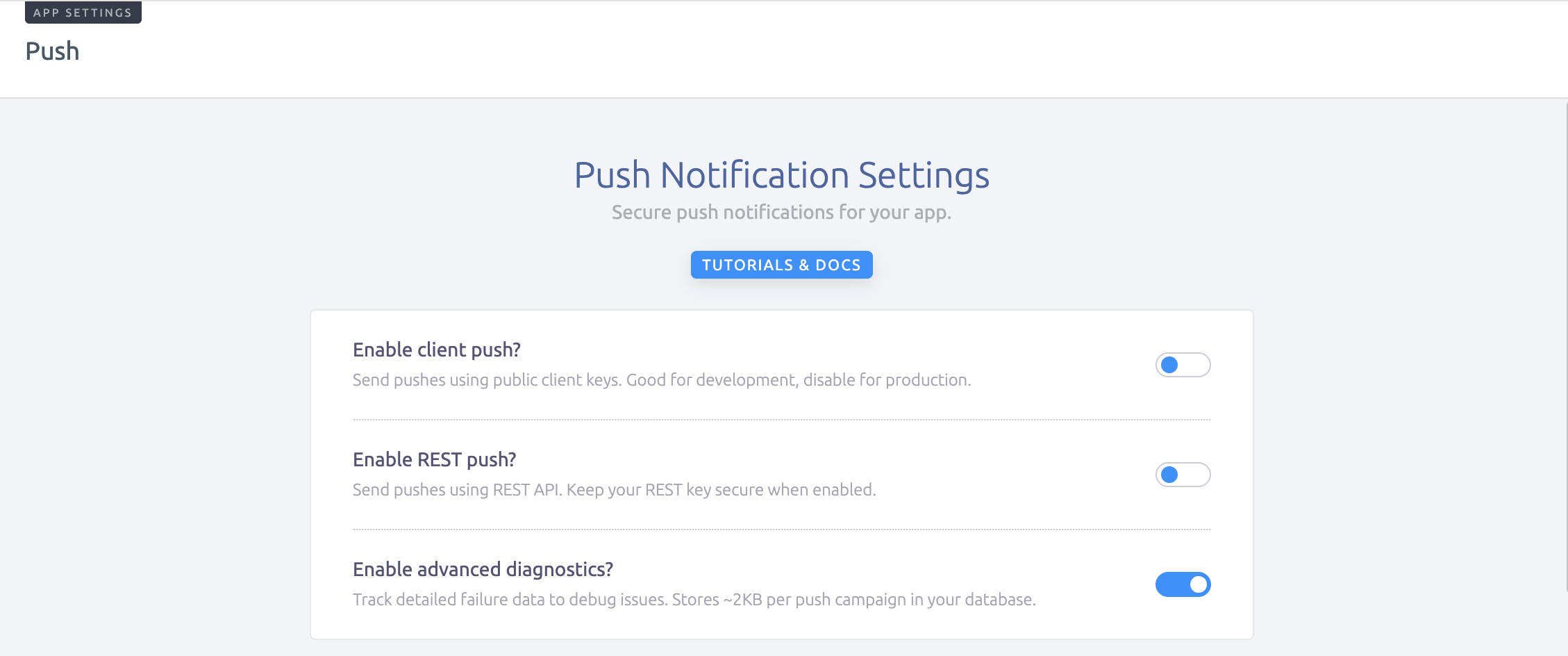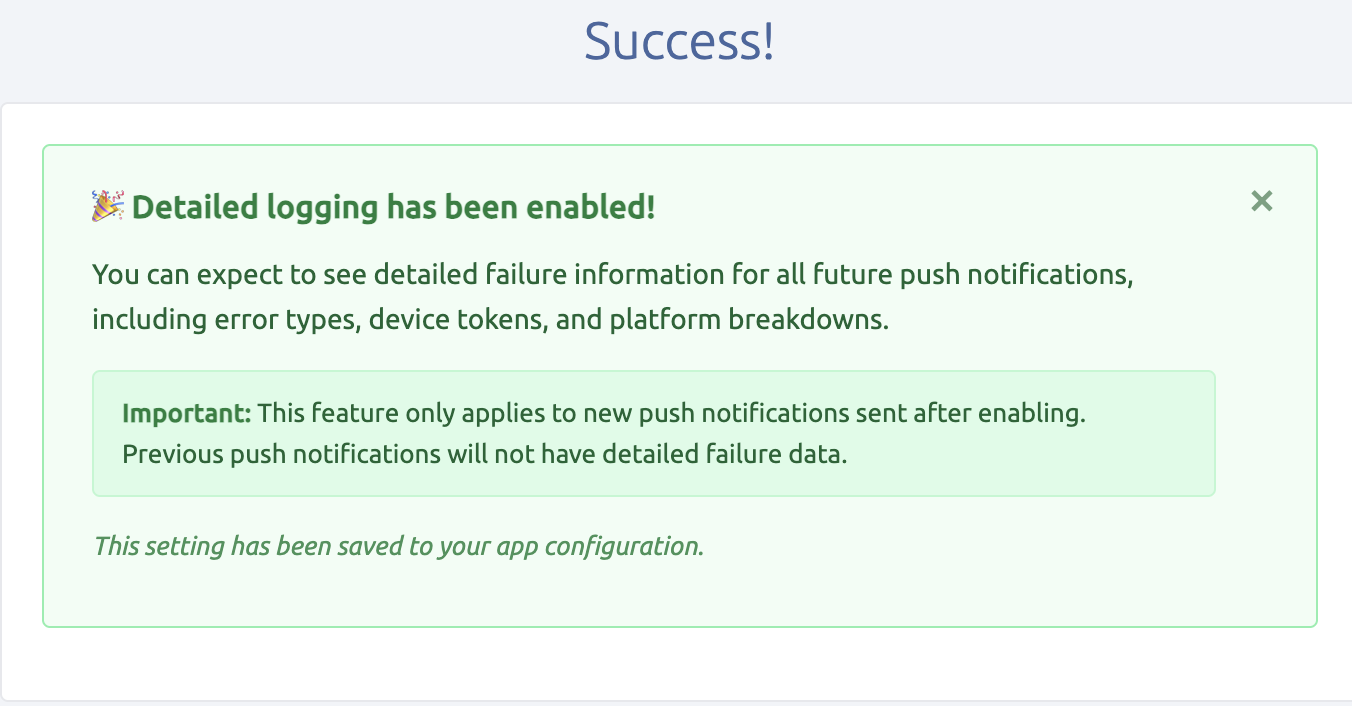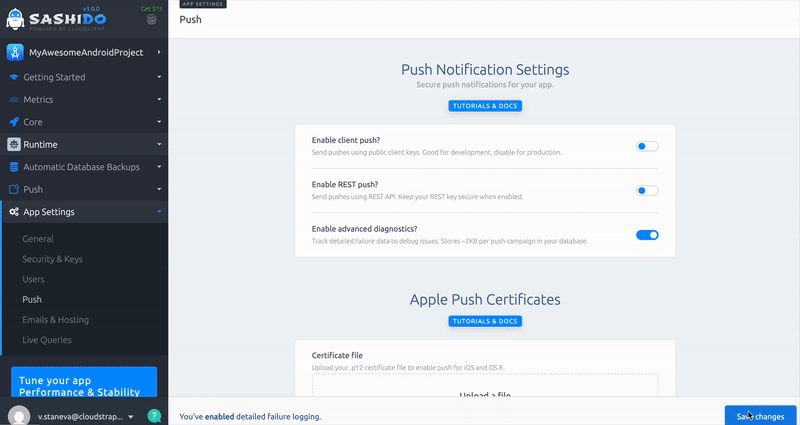When push notifications fail, your users notice, but until now, getting to the why behind those failures hasn’t been easy. You’d see the error count, maybe even the device type, but no real way to connect the dots between the failure and the specific user or their device.
So you asked us for deeper visibility into push delivery. We listened and we built Advanced Diagnostics for Push Notifications - a powerful new way to investigate delivery issues, trace them down to exact devices, and take action fast.
No more guesswork. No more back-and-forth. Just the right data, in the right place, when you need it most.
Failing Push Notifications: The Missing Context
Until now, you could see that some pushes failed. You could see the number. But tying those failures to actual devices? Connecting them to specific users? You see a handful of errors, but you don’t have enough context to act. That was… messy. We know.
And if you wanted to know why they failed - like Unregistered, Invalid Token, NotSubscribed, etc. - you had to do some serious log archaeology.
That changes today.

Photo by bruce mars on Unsplash
What We Built
Meet Advanced Diagnostics for Push Notifications - a focused upgrade to give you more context, faster insight, and actionable data where you need it.
Enable Diagnostics with One Toggle
In your app’s settings, click "Enable Advanced Diagnostics" under Push Notification settings.

Once toggled, SashiDo Push Notification Service begins automatically collecting:
- Push delivery errors by Installation ID
- Full list of affected device types (iOS / Android)
- Exact failure reason (e.g. Unregistered)
- Timestamp and Push ID context
- Filtering and export support for deeper analysis

You can access all diagnostics metadata from the Push Failures tab or via the Database Browser.
Visualize Detailes
View a dedicated list of all push failures (e.g., “Push ID #27: Unregistered”).

Where you can find details by device type, error type, date, or Push ID so you can isolate patterns.
Quick Export
Export the data as CSV for offline analysis or sharing with stakeholders.

Dedicated Failure Collection & Filters
Once the feature is enalbed and erros are logged the service automaticaly creates a collection called _PushFailureDetails where you can easily review a detailed summary of the errors righ in the Dashbaord. This way you can easily leverage the Database Browser for filtrering a specific push ID.

Copy & Share Instantly
Each failure has a “Copy” option. Click it to get full context: Push ID, Device Type, Error Reason, Timestamp. Perfect for support tickets, bug reports, or Slack threads—no screenshot cropping required.
Real-world use case
A customer tells you “I didn’t get the push”. Previously, you had two options:
- Hope it was a one-off
- Or start exporting _PushStatus and _Installation manually
Now? You go to Push Notification Details → Failed Device Tokens → open _PushFailureDetails collection → Filter by Push ID → See all devices that failed → Copy and investigate.
Less guesswork. More resolution.

Photo by Brett Jordan on Unsplash
Why This Matters
You spend less time hunting and more time fixing. One toggle, clear data, instant context. Everyone on your team sees the same data set. No more “whose token is this?” or “why did this fail?” slack threads. All this ultimately means faster recovery from push failures, better reliability for your users and stronger trust in your shipping process.
Try It Now
This feature is live for all SashiDo users.
👉 Log in to SashiDo Dashboard → choose your app → Settings > Push → Enable Advanced Diagnostics → ready, set, go.
Start your next investigation with confidence.
Want More Debug Power?
Got feedback? We want to know what info you need to take troubleshooting from “maybe” to “done”. We’re actively prioritizing improvements based on real feedback - like this one.
👉 Drop us a note at support@sashido.io or directly open a ticket through the dashabord.
Because shipping code is hard enough, debugging it shouldn’t be.
Not using SashiDo yet?
We’re a serverless backend built on Parse Server. No vendor lock-in. No credit card. And a real-human support team that actually responds.
Happy Coding!
